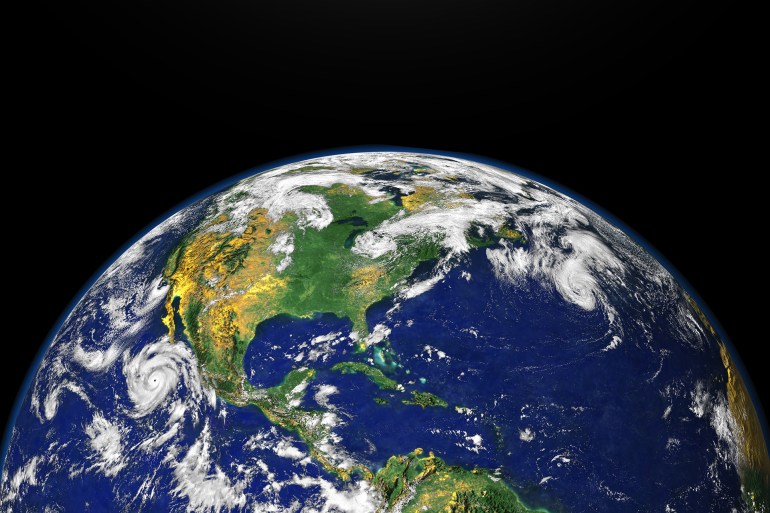Equinox is a unique phenomenon during which Earth's day and night are of equal length resulting in 12 hours of daylight and 12 hours of night in every part of the Earth.
This is not the case on other days of the year, when the Earth's tilt of 23.5 degrees causes the length of the day and night to vary, depending on the time of year and the region of the Earth.
The equinox phenomenon occurs only twice a year, when the Earth lines up with its orbit around the sun, once on the 20th of March called the vernal equinox and again on the 23rd of September called the autumnal equinox.
During this time, the sun is directly over the equator and the northern and southern hemispheres are equal in day and night.
What causes moderation?
The name Equinox comes from the Latin words (aequus) for "equality" and (nox) for "night".
As an article published on Live Science points out, because the Earth revolves around the sun at an inclination of about 23.5 degrees, this means that different parts of our planet receive different amounts of sunlight at different times of the year, depending on the location of our planet in its orbit. .
For all the countries of the world, the sun rises in the east and sets in the west.
However, the sun also appears to move north for half the year and south for the other half, depending on where you are.
Around July, the northern hemisphere sees longer periods of daylight while the southern hemisphere sees shorter periods of daylight.
Around December, the opposite is true, with more daylight hours in the Southern Hemisphere and fewer in the Northern Hemisphere.
At this time of year, the sun is directly at the equator (Shutterstock)
But twice a year, in March and September, our planet's tilt aligns with its orbit around the Sun, and the Earth doesn't seem to tilt with respect to the Sun, according to the National Oceanic and Atmospheric Society.
At this time of year, the sun is directly at the equator and both hemispheres have the same hours of day and night.
At these times, the line separating day and night - called the "grey line" or "twilight zone" - divides the Earth and passes through the north and south poles.
They are not completely equal
Although the equinox means the hours of night and day are equal, according to the Earth Sky website, night and day remain completely unequal during the equinox, although they come very close to it.
During the equinox, Earth gets a few minutes more light than darkness (Wikipedia)
During the equinox, the Earth gets a few minutes more light than darkness.
This is because sunrise occurs when one edge of the sun is above the horizon, and sunset is defined as the moment when the other edge of the sun disappears below the horizon.
Because the sun is a disk rather than a point of light source, Earth only sees a few extra minutes of extra light, rather than darkness, during the equinox.
The atmosphere also refracts sunlight and continues to travel to Earth "at night" for a short time, even after the sun has sunk below the horizon.
According to the US National Weather Service, in the equinox and for several days before and after it, the length of the day varies from about 12 hours and 6 minutes and a half at the equator, to 12 hours and 8 minutes at latitude 30 degrees, to 12 hours and 16 minutes at latitude 60 Degree.
The equinoxes do not necessarily occur on the exact same day each year (websites)
The equinox does not happen on the same day every year
The equinoxes do not necessarily occur on the exact same day each year, they occur around March 20 and September 23.
These dates are variable because the Earth year is not exactly 365 days, an extra quarter of days (6 hours) accumulate each year, causing the equinox date to shift.
The planet's orientation toward the sun also changes constantly, adjusting the timing of the equinox.
In this year 2022, the vernal equinox occurred a few days ago on March 20.
The autumnal equinox will occur on September 23rd.
The equinoxes mark the astronomical start of spring or fall, depending on the hemisphere.
However, the meteorological start for these seasons is on 1 March and 1 September.
In the Northern Hemisphere, the vernal equinox heralds the beginning of spring (Shutterstock)
In the northern hemisphere, the vernal equinox heralds the onset of spring, and at the same time, the southern hemisphere turns into autumn.
And vice versa in September, when the northern half of the planet descends into the cooler autumn months, and the southern half enters spring.
Earth is not alone in experiencing equinoxes. All planets in the solar system have equinoxes when the planet's orbit and inclination relative to the sun cause both halves of the planet to receive approximately equal amounts of light.

